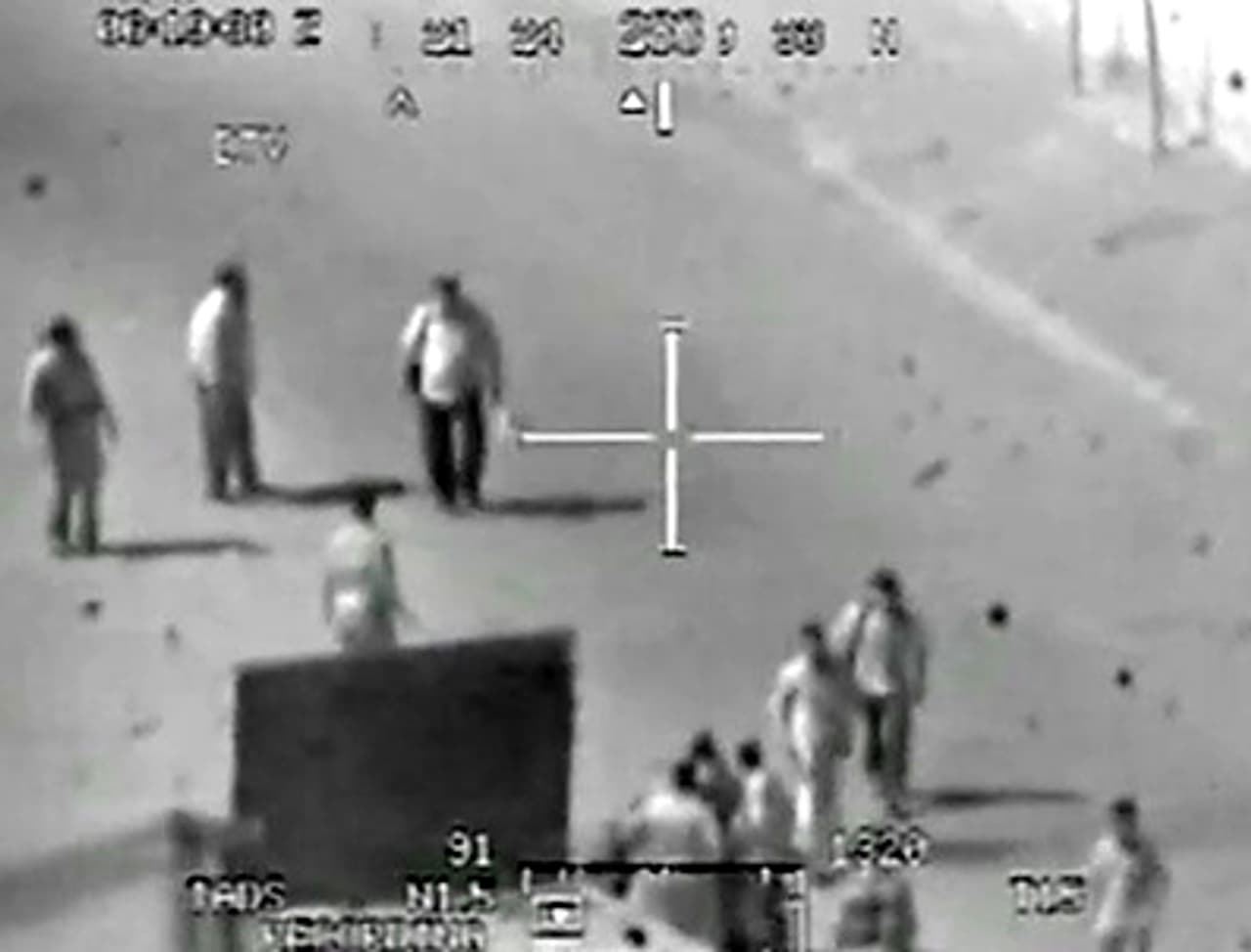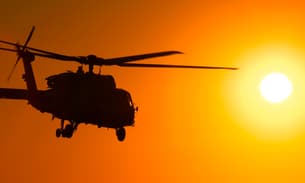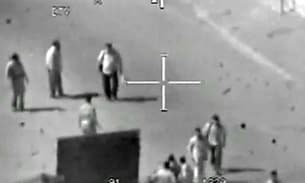
US Apache guns down surrendering insurgents
On February 22 2007, a US helicopter engaged a group of insurgents involved in a mortar attack upon coalition forces, near Baghdad.
After firing a series of 30mm rounds, the crew of the helicopter – callsign “Crazyhorse” – radioed to their command, stating the insurgents “wanted to surrender”. The response was blunt: “CRAZYHORSE cleared to engage … Lawyer stated they cannot surrender to aircraft.”
The Apache crew killed the men.
February 22 2007
CRAZYHORSE reports AIF [Anti-Iraqi Forces] got into a dumptruck headed north, engaged and then they came out wanting to surrender…
CRAZYHORSE cleared to engage dumptruck. 1/227 Lawyer states they can not surrender to aircraft and are still valid targets.
It is one of the reports of most concern.
According to Claude Bruderlein, director of Humanitarian Policy and Conflict Research at Harvard University, what is reported in the files about this incident would be a clear breach of international law.
“This idea that you cannot surrender to a helicopter is ridiculous, absolutely unacceptable,” he told the Bureau. “Surrendering is a fundamental principle of the law of armed conflict and you can surrender to aircraft. You cannot attack those that surrender.”
Bruderlein, a former special adviser to the UN Secretary General, cites the allegations as being a clear breach of article three of the fourth Geneva Convention, drawn up in 1949 following the second World War. It states “that non combatants and members of the armed forces who have laid down their arms, shall in all circumstances be treated humanely” and prohibits “violence to life and person”.
According to the files, despite knowing the insurgents wanted to surrender, the crew not only opened fire with a Hellfire missile, but when it missed they actively chased them down to a shack where they had taken refuge. With the approval of their command unit, they opened fire again , killing both.
February 22 2007
CRAZYHORSE reports engaged and destroyed shack with 2x AIF …
CRAZYHORSE continued to observe for approx 20 minutes … CRAZYHORSE is off station to refuel and rearm.
According to Bruderlein, if the allegations are correct, both the crew of the helicopter and the officer who cleared them to engage, would be guilty of war crimes. The lawyer who offered the legal advice would, he believes, not be guilty.
Graphic: Hellfire strikes on Iraq
Other surrender kills
The Bureau has found another file in the war logs that relates to leaked footage of an Apache helicopter opening fire on a man, who appears to be trying to surrender. The log makes no mention of the fact the man appears to be trying to give himself up:
31 July 2004
After positive identification from UAV “Big Gun 74” gven authorisation to engage the vehicle. The vehicle engaged and destroyed … 1 X KIZ on side of road. Cleared site and reported: several RPGS, 1X AK-47, 1X 82MM mortar tube with several rounds, 1X tripod. MP and EOD on site.
The video clearly shows the man leaving his car, his hands behind his head.
No legal precedent
There is no legal precedent stating that an enemy combatant cannot surrender to aircraft. According to Bruderlein, once a combatant surrenders they are protected. He says any argument that a helicopter does not have the ability to capture is irrelevant.
“The protection of those who surrender is not linked to the capacity to capture. If you say “well I don’t have the capacity to capture, so you simply kill them all” – this is the end of the principle. As soon as they don’t represent a threat, they are protected.”
A trawl through thousands of files in the war logs has found evidence that other helicopter gunships had the ability to, and accepted, offers of surrender.
In one incident, just over a month prior to the Crazyhorse episode, coalition forces were reported to have engaged a group of insurgents planting an IED:
January 10 2007
LH05 [LIGHTENING HORSE] engaged the white truck with 8 rockets … The 2x LNs [Local Nationals] got out of the truck and surrendered to LH 05. Alternate QRF [Quick Reaction Force], responded and detained the 2x LNs.
In this case, there were troops on the ground who could detain the surrendering insurgents. But in other cases, when no troops were present, the helicopter crews stayed in position and waited until ground forces arrived.
Another Apache helicopter caused controversy in spring 2010 when Wikileaks released video footage of a helicopter attack in Baghdad that killed a dozen civilians, including two Reuters journalists.




